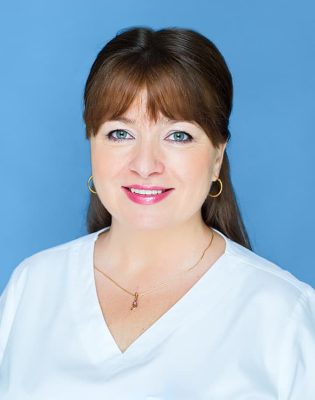Braces
Orthodontic occlusion correction with braces is an effective method of treating teeth crookedness and position of the jaws in children and adults. The correction is carried out by changing the position of the teeth to the anatomical norm. The more responsive the tissues of the dentition, the faster the result is achieved.
Therefore, dentists recommend putting on braces at the age of 12-14. However, this does not mean that it is no longer possible for adults to correct the pathological situation. Modern orthodontic constructions solve the problem of pathological occlusion in a given case at almost any age and give self-confidence for many years.
Braces, for many decades, continue to be effective, reliable, and safe orthodontic appliances that allow carefully correcting defects in the position in the upper and lower teeth. It is most effective to use braces during adolescence when the bite is still forming. Despite the temporary aesthetic inconvenience when wearing braces, they will result in a beautiful smile.

The effectiveness of braces lies in the symbiosis of the prescribed prescription and the ability of orthodontic archwires to return to their shape. Due to this, teeth take their correct position. Adjusting archwires apply constant moderate pressure on the braces themselves, which leads to a correction of the dentition. The mechanism of occlusion correction is based on the so-called metal arch shape memory.
WHAT IS A BRACE SYSTEM?
INDICATIONS FOR BRACE SYSTEM INSTALLATION
Various abnormalities:
• dentoalveolar – crowding of teeth, the vestibular, palatal position of individual teeth, dystopia, etc.;• skeletal defects (distal, mesial, open, closed, crossbite);
• creating a site for the implant;
• impacted teeth;
• tooth abrasion;
• traumatic occlusion.
TYPES OF BRACE SYSTEMS
Braces can be:
• classic vestibular;
• self-ligating;
• lingual.

Previous generation braces (classic ones) have wire or elastic ligatures. The arch is tightly attached by the ligatures, so they do not slide during the movement. Alignment and movement result from intense pressure. Bite correction is a long-term process and can cause temporary aesthetic inconveniences to the patient. Therefore, the new generation of ligatureless braces appeared. They are also external, but the difference is that the arch is passively attached, which is locked. She slides, acts selectively, with small but constant forces.
The lingual or internal brace system differs by its position, closer to the tongue, on the inside of the teeth. The advantage is its invisibility.Metal braces – are the most popular option, they have been used for a very long time, so there is no doubt about their effectiveness in correcting the bite. Metal alloys are hypoallergenic.
Ceramic braces are small and smooth. Ceramics have an enamel tint so that they will be almost invisible.
Sapphire braces are only classic. They don’t differ much from the ceramic ones, but they are more transparent. This type of braces is made of artificially grown sapphire.
Lingual braces. A special dore gold is used for their manufacture. They are hypoallergenic, do not cause any local reactions or damage to the tongue. Their advantage is invisibility; they don’t change articulation and voice patterns.
There are also metal lingual braces. They guarantee invisibility but can strongly affect the pronunciation of fricatives due to the structure’s thickness interfering with the tongue movement.STAGES BRACE SYSTEM PLACEMENT
7. The arch is inserted into a bracket slot, fixed in the tubes on the molars, tied with ligatures, or sealed in particular brace devices if the braces are self-ligating.
The correction is performed:• once every 3-4 weeks for classic vestibular braces;
• once every 6-8 weeks for self-ligating (non-ligating) braces.

ADVANTAGES AND DISADVANTAGES
Malocclusion and crooked teeth are not just a matter of aesthetics. Pathology leads to a variety of health problems. Violation of occlusion and incorrect anatomical alignment of the upper and lower jaw teeth leads to the following common complications:
- reduced speech clarity;
- difficulty in hygienic care and underlying risk for tooth decay;
- injury to the tongue and mucous membranes of the oral cavity;
- loosening of teeth with their subsequent loss;
- drooling, spitting while talking.
Malocclusion can lead to external imperfections, such as facial asymmetries, hollow cheeks, drooping mouth corners, and the nasolabial folds deepening. Depending on the malocclusion type, particular signs are formed: upper or bottom jaw extending forward, chewing disorders, pushing the tongue, and narrow mandible.








